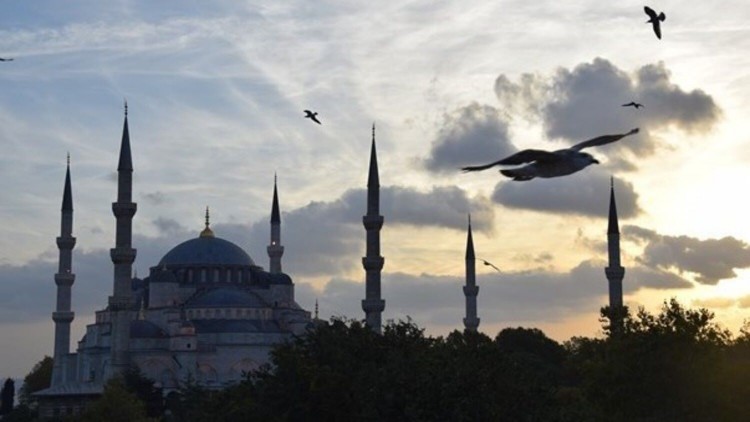
Sultanahmet: A place every tourist must visit
Haber Üsküdar - Ludovica Santarelly
One week after coming to İstanbul, I have decided to take the ferry to the European side. I have already started exploring the city. I felt lucky to live in the Asian side of the city. It is less crowded, more residential, but with beautiful and vibrant neighbourhoods such as Kadıköy and Kuzguncuk.
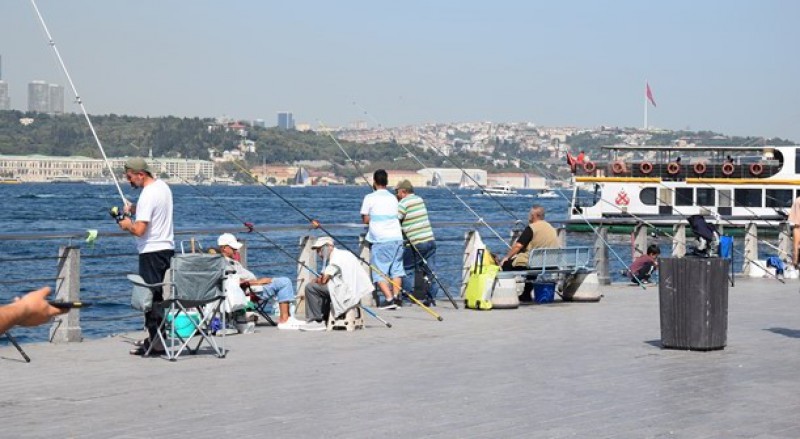
The walk to the Üsküdar port has almost become a routine for me; it makes you feel peaceful to sit on a bench near the seaside and watch the fishermen go on with their work.
Taking a ferry to Sultanahmet
I passed the gates to take the ferry for Sultanahmet; few people were sitting in the waiting room, two cats were grooming each other on a chair, unbothered despite the hustle and bustle of folks coming in. I took a ferry a few other times, but never here. It almost looks magical: the symbolic travel between two continents by sea, the astonishing view of the city. I took some pictures from the prow, a guy pointed out the monuments to me; he did not speak English, but I could see how happy he was to show his place to a foreigner.

I landed in Sirkeci; the station looked chaotic already: welcome back to Europe, I told myself. I knew I could take a tram and arrive directly to Sultanahmet, but I wanted to walk and enjoy the surroundings. The road was full of shops and restaurants, and it appears quite common to be stopped by shop owners who invite you to go inside. I did not know if they were used to tourists or if I looked out of place, but every one of them spoke to me in English. I kept walking, amused by the atmosphere, until the Mosques appeared to me for the first time.
As somebody who never really came in contact with mosques before, the view looks spectacular. Sultan Ahmet Camisi, best known as the Blue Mosque, and Ayasofya, or Hagia Sophia, face each other, separated only by a big and lustful garden. The history of why two mosques are located in each other’s vicinity is quite interesting: around 1609, Sultan Ahmed I decided to build a large mosque in Istanbul in the hope of soliciting God's favour. There was already Hagia Sophia, which was originally built as a Christian cathedral during the Roman Empire, and then converted to a mosque in 1453. The legend says that the Sultan wanted to build a new mosque that could rival or surpass the former Cathedral, and that is why he decided to locate it near it.
Blue Mosque puts me at peace
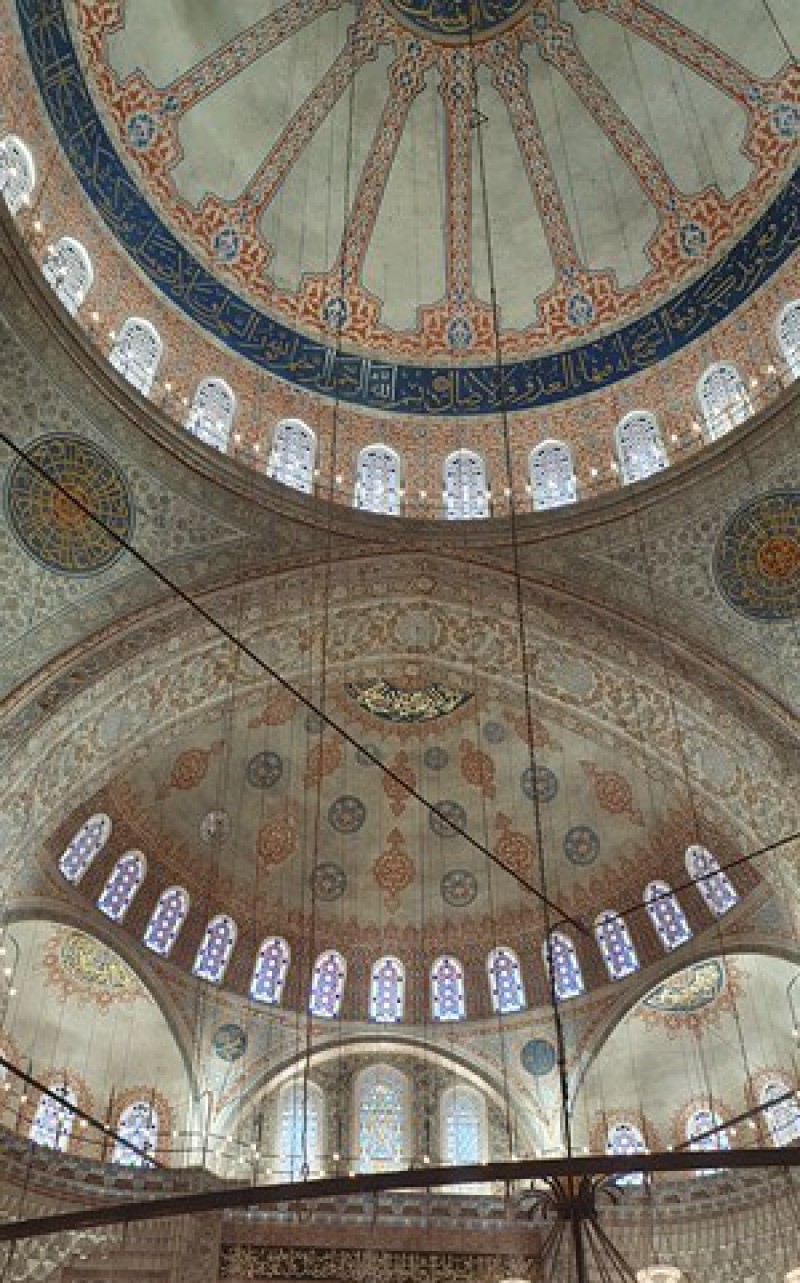 Both look magnificent from the outside: Hagia Sophia with its pink ancient walls and the Blue Mosque with its six minarets. It’s already afternoon, I tried to queue for Hagia Sophia but the next visit was not available until half an hour later, so I decided to head towards the other mosque. Visitors were allowed only in certain sections and certain hours, so I checked the time before going inside.
Both look magnificent from the outside: Hagia Sophia with its pink ancient walls and the Blue Mosque with its six minarets. It’s already afternoon, I tried to queue for Hagia Sophia but the next visit was not available until half an hour later, so I decided to head towards the other mosque. Visitors were allowed only in certain sections and certain hours, so I checked the time before going inside.
The courtyard was already fascinating, with the big arches surrounding the ablution area situated at the centre. Nevertheless, it is the inside that astounded me: the lower walls of the mosque, especially around the galleries, are covered in Iznik tiles, featuring over fifty different designs. It is the first time that I entered a place like this and everything looked great to me: the windows, the roof and the coloured carpets where you cannot walk with your shoes, which have to be left outside in specific shelves. I hope that the scarf I was using as a hijab was staying on its place without slippering while I lifted my head to admire the grandeur. Some Muslims were praying inside the central section that was not accessible to everybody; I stayed a little bit longer to be able to feel the magic of the place fully. The colours and the blazing of the soft lights put me at peace.
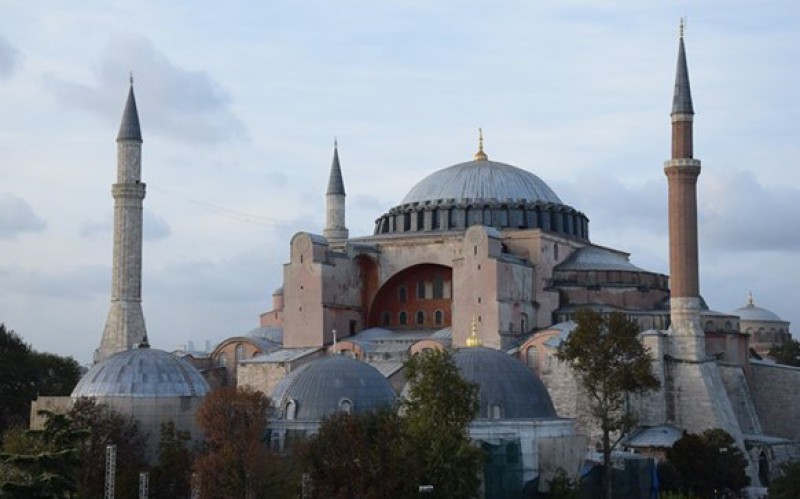
Hagia Sophia is mysterious
I undertook my way back to Hagia Sophia and I waited in line, the visit was almost ready. A woman reminded me to put my scarf, that was now laying on my shoulders, back on the head, and I noded in response. Tourists seemed much more interested in this mosque, probably because of its fame. The entrance was huge and to go inside the mosque we had to pass through two metal detector checks: they are quite normal here in Istanbul, for security reasons. The former Basilica gave me a completely different sensation: it is dark and mysterious, the lights that surround the place are finely arranged but they do not deprive it of its gloom. Some Arabic writings are placed around the walls. It is much more crowded, as also the intense smell suggests. Many people were seated on the carpet, talking quietly; I did the same: it felt quite cozy. Before leaving the mosque I took a look at the courtyard; the ablution areas are separated for men and women near the bathrooms, the path is edged by beautiful plants and flowers.
Going back to the main square feels like plunging into chaos again. The smell of the simits, Turkish bagel, guides me through the garden; I stopped in front of a little postcards stand, determined to buy some, and a guy approached me. He gently explained the monuments portrayed on the photographs, then offered me to take a look at the mosques from a different point of view. I normally would not trust a stranger, but he seemed honest. We went inside the hotel where he worked as a waiter and went all the way up to the terrace: it is a weird place, filled with wealthy people having a late lunch and feeding the seagulls, but the view from there was astonishing. I took some pictures and then said goodbye to him.
Walking to the Grand Bazaar
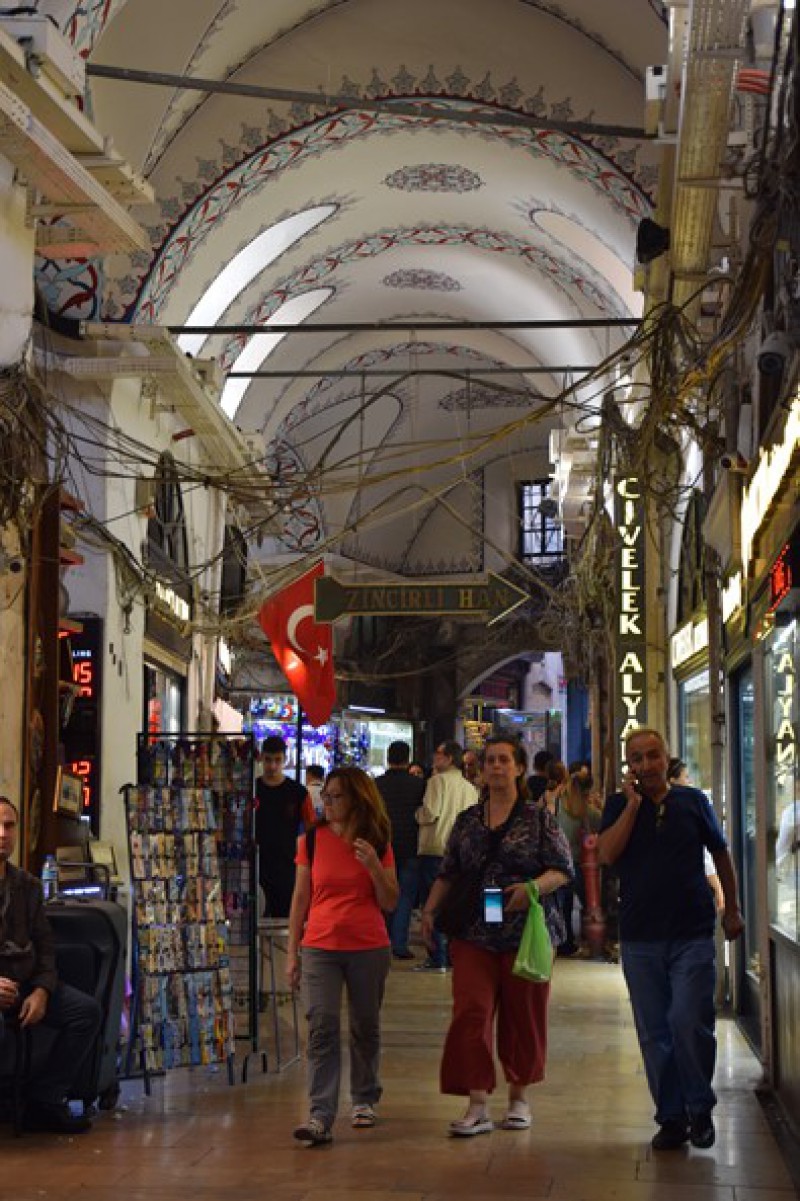 Since I was already there, I decided to take a walk to the Grand Bazaar, one of the largest and covered markets in the world, with historical value. I am not a big fan of crowded shopping centres, but many people recommended me to visit it and I must admit that I am intrigued. It takes around ten minutes from Sultanahmet, but I would not mind walking anyway, especially when I am out discovering new places. A musician was playing on the sidewalk and, every now and then, I stop to pet the cats that are hanging around. Cats are the true emperors of Istanbul: strays may appear as a big problem in Turkey, but the residents take good care of them.
Since I was already there, I decided to take a walk to the Grand Bazaar, one of the largest and covered markets in the world, with historical value. I am not a big fan of crowded shopping centres, but many people recommended me to visit it and I must admit that I am intrigued. It takes around ten minutes from Sultanahmet, but I would not mind walking anyway, especially when I am out discovering new places. A musician was playing on the sidewalk and, every now and then, I stop to pet the cats that are hanging around. Cats are the true emperors of Istanbul: strays may appear as a big problem in Turkey, but the residents take good care of them.
The Grand Bazaar was far more crowded than I imagined, but the place itself looks charming. It has 61 streets, some of them located in the more ancient area, and the shops are countless. I mostly find jewels, lamps, spices and ceramics, which enrich the corners of alluring and colourful shadows. Despite all the beauty, I did not spend much time inside. Too many merchants tried to gain my attention by calling me or complimenting me, and I did not feel at ease. This is maybe the only downside of the Bazaar: it is impossible to enjoy a stroll in peace. I get out of the covered side and find a little store that sells the famous Turkish dessert: the Lokum, mostly known as the Turkish Delight. I bought some to share with my flatmates; the owner asked me where I was from and proceeded to tell me his adventures in Italy. People in Istanbul are mainly nice and welcoming, always eager to offer their help.
I would have gladly walked all the way back, but I felt somewhat tired, so I waited for the tram. I love public transport in this city: the choices are vast and you never have to wait too much. Once in Sirkeci, I decided to take the Marmaray train: the stations between the European and the Asian side are linked through a tunnel under the sea. I cannot really see anything from the windows, since it is dark, but the concept does not fail to amaze me. A beautiful way to end a lovely journey.
